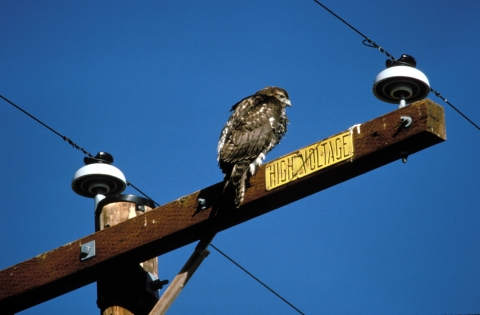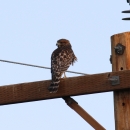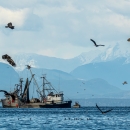Best Practices by Industry
Quick Links:
TELECommunication Towers Power Lines LAND-BASED Wind Energy Offshore WinD ENERGY
Solar Energy Transportation Commercial Fisheries OiLed and Produced Waters
Nationwide Avoidance and Minimization Measures
________________________________________________________________________________________________
What is my role and responsibility?
Migratory birds are a trust resource that require care by all. U.S. Fish and Wildlife Service activities and employees should utilize this website to provide technical assistance and when reviewing Service activities and actions (See Director’s Order 225). Other federal agencies should also draw from this website to provide information and when reviewing activities and actions (See Executive Order 13186). We recommend project proponents explore our library of activity-related measures to identify ways to avoid and minimize injury and killing of migratory birds. There are steps individuals can take at home, as well.
What are stressors and how do I avoid or minimize them?
One approach to identifying if your activity may affect migratory birds is to look at common stressors. Stressors are any alteration of or addition to the environment that have an adverse impact. For migratory birds, stressors include vegetation alteration, vegetation removal, ground disturbance, structures, noise, light, chemicals, and human presence. There are often practices that can be incorporated into planning and implemented during the construction, operation, and maintenance activities that avoid and minimize the injury and killing of migratory birds. Guidance and resources can be found in our library of activity-related measures.
What data and tools are available to identify species in my area?
The Service has a number of tools available to help in decision-making processes. The Service maintains a list of federal Birds of Conservation Concern. If these species are present, we recommend starting with these species to identify and avoid or minimize stressors. The Rapid Avian Information Locator (RAIL) tool and the Service's Information for Planning and Consultation (IPaC) system pool multiple data sources to provide a wealth of information about the bird species within a user-defined location.
What other resources are there for bird information?
For biological or ecological information on bird species, we recommend the following. The Cornell Lab of Ornithology’s eBird site provides detailed information by species. The State of the Birds is a general summary of current population trends. The North American Bird Conservation Initiative (NABCI) is a source of general bird conservation information, including Birds of Conservation Concern.
Do I include migratory birds in NEPA documents?
Impacts to migratory birds should be identified in environmental review documents, such as National Environmental Policy Act (NEPA) documents. Agencies and projects should work cooperatively to identify and, as appropriate, require implementation of measures to avoid and minimize the incidental take of migratory birds. We recommend a list of steps to evaluate the impacts of actions on migratory birds.









